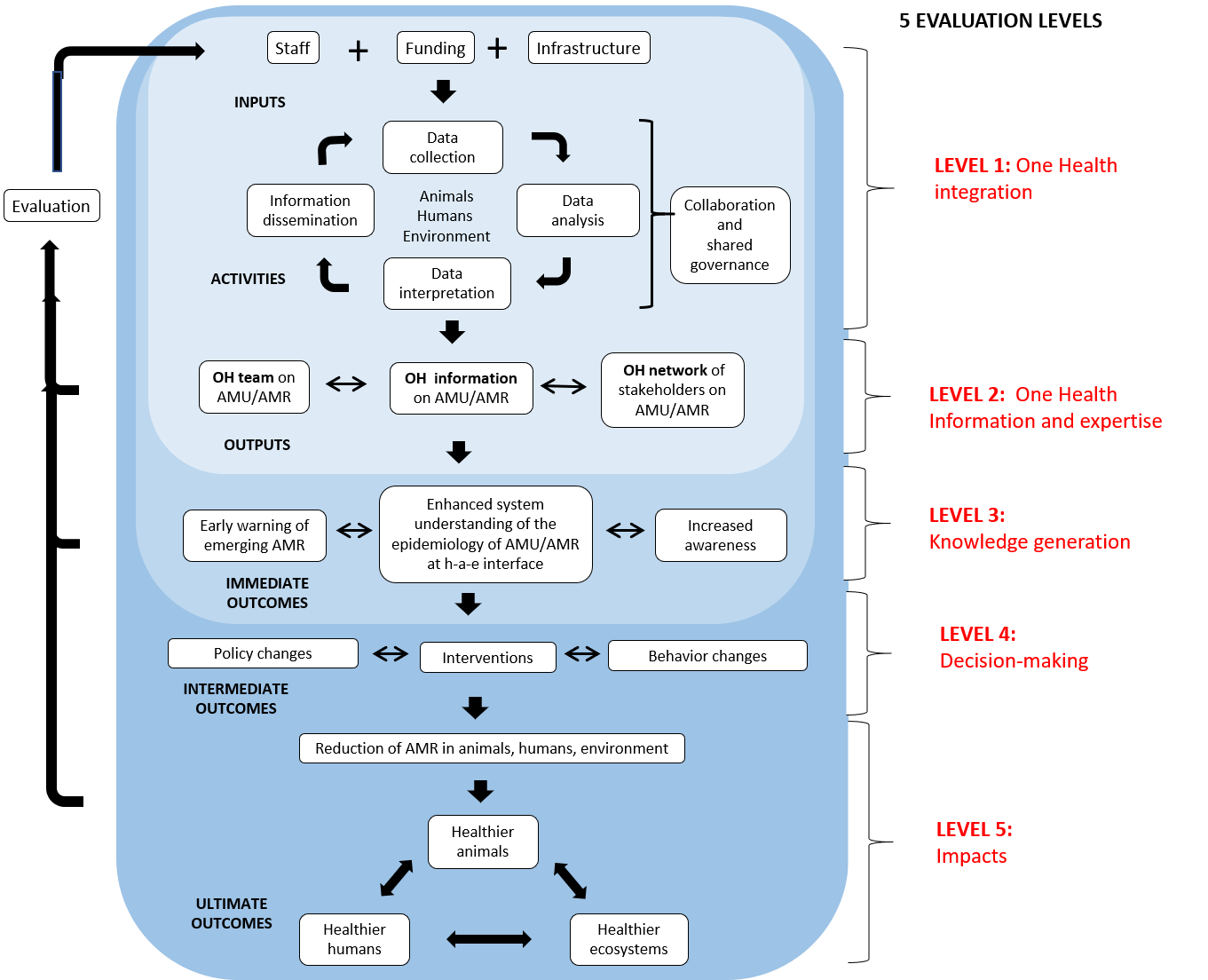The 5 Evaluation Levels
Conceptual model for evaluation of integrated surveillance for AMU and AMR

Level 1 evaluation aims at evaluating OH integration across the different components of the surveillance system. This includes the evaluation of the collaboration between stakeholders and organisations, shared governance, as well as integration of different OH components from human, animal, plant and environmental health in surveillance activities (planning and design, data collection, analysis, interpretation and dissemination).
Evaluation tools that can be interesting to explore at this level are:
Level 2 evaluation aims to assess the capacity of the surveillance system to produce integrated information and expertise. Three main outputs can be evaluated at this level: the performance of the One Health surveillance team (the operational team), the performance of the One Health network of stakeholders that are united by the surveillance system, and the capacity of the system to produce up-to-date OH information on AMR.
Evaluation tools that can be interesting to explore at this level are:
Level 3 evaluation aims to evaluate how combining the OH information and its interpretation by the OH team and its OH network contributes to the generation of new and actionable knowledge on AMR at the human-animal-environment interface. Three aspects are particularly important at this stage: 1) an evaluation of how the integration in the system enhances the capacity of the system to detect trends and correlations in AMR circulating between humans, animals and the environment, 2) an evaluation of how the integration in the system enhances the capacity to explain trends and correlations in AMR circulating between humans, animals and the environment, and then lead to a better understanding of the epidemiology of this complex problem and 3) an evaluation of the capacity of the system to increase the awareness of relevant stakeholders (actionable knowledge).
Evaluation tools that can be interesting to explore at this level are:
Level 4 evaluation aims at evaluating how the knowledge generated by the integrated system is used for decision-making. This includes evaluating if and how the knowledge generated is translated into direct interventions (e.g., sanctions if higher levels of antimicrobial use are detected in a particular animal or human setting). It also involves two other types of decisions that should be evaluated: 1) if and how the system is able to influence policy changes (for example restricting the use of some types of antimicrobials in agriculture by public or private institutions), and 2) if and how the system is able to influence individual behaviours that are not necessarily linked to formal policy changes (eg. changes in prescribing practices by veterinarians).
Evaluation tools that can be interesting to explore at this level are:
Level 5 evaluation aims to evaluate the impacts of the decisions that can be attributed to OH integration in the surveillance system, including impacts on AMR reduction, and their consequences on human, animal and ecosystem health. It is also at this level that the economic impacts of the whole mitigation system can be evaluated.
Evaluation tools that can be interesting to explore at this level are:
